Kamaaina discounts, exclusive deals for Hawaii residents, have long been touted as a perk to ease the high cost of living in the islands. And we’ve written about them previously because Hawaii visitors and residents have asked about them so many times. Today, we received a question from our prolific 600-comment reader Rod W., who asked:
“The taxes (we pay) might be at the same rate (for visitors and residents). But, aren’t there discounts on the room rates for local folks?“
There’s growing skepticism about several aspects of the Kamaaina discount. First, is its value real? Are these discounts genuinely the most beneficial, or have they become just another marketing gimmick? Furthermore, are these discounts fair to Hawaii visitors who cannot access them?
The fairness debate about Kamaaina discount and visitor perspectives.
Visitors have often expressed frustration and feelings of exclusion regarding Kamaaina discounts. Kathy from Lake Tahoe remarked, “Here in Lake Tahoe, locals get zero discounts. Why are we bent over when we travel to Hawaii?” This sentiment is echoed by many who feel that the discounts create an unequal playing field. At the other end of the spectrum, Eva added, “Considering high prices inflated by tourists, I am glad that Kamaaina rates exist.” These highlight the tension between tourist spending and resident affordability.
Mike J humorously commented, “Usually, I just wish I had a Hawaii driver’s license. Given the amount of money I have spent on my visits, I should be given an honorary one.” Mike illustrates well the desire of frequent visitors to benefit from the same perks as residents. Meanwhile, Steve O. pointed out, “Why do visitors think they have the right or are ‘owed’ the right to visit Hawaii… Imagine wanting to go to a local beach, local park, or restaurant and not being able to get in because of the mass of tourists.”
Adam M. chimed in about this, expressing his frustration and stating, “As much as I’ve loved my 10 trips to Hawaii, I find the constant anti-tourist policies, rules, and sentiment off-putting. Rising prices and falling service quality make the travel future look bleak.”
Another commenter, Mike, echoed a common sentiment: “It’s discrimination. This viewpoint suggests that offering special rates exclusively to residents might be seen as unfair to visitors who also contribute significantly to the local economy.”
These comments and others reflect a broader concern that while Kamaaina discounts are intended to support travel by residents, they inadvertently alienate and frustrate visitors who feel they are not receiving fair treatment despite their significant contributions to the local economy.
How much ongoing value is there in Kamaaina discounts?
Before visitors get too worked up in us versus them regarding these discounts, realize that things have evolved greatly. In the past, Kamaaina discounts offered substantial savings, sometimes up to 30% or more. But today, it is clear that these discounts have dwindled.
On a recent hotel stay, we were offered a 40% Kamaaina discount, yet the actual savings were far less, about 10%, due to other discounts that were available for non-residents. Sometimes, however, we find that in addition to a much smaller discount, better terms may be available for Kamaaina reservations. These can include no resort fee, reduced parking charge, or a better cancellation policy.
Joerg H noted, “The Kamaaina rates I’ve encountered recently are nowhere near what they used to be.” This experience is shared by many residents who remember more significant savings in the past. Joel L. had a similar experience at a high-end hotel, where he found the Kamaaina rate was still prohibitively expensive.
Even when hotels advertise up to 40% off, the fine print often reveals much smaller actual savings. Jim M. reported that non-resident deals on platforms like Hotels.com sometimes offer even better rates than Kamaaina discounts.
This is confusing, leading to questions about just who feels cheated and who is receiving better deals, visitors or residents. In fact, the difference might be minimal.
The marketing angle of Kamaaina discounts.
Hotels and other businesses have increasingly used Kamaaina discounts as a marketing strategy focused on attracting Hawaii residents more than a genuine benefit. Chris F. pointed out, “Hotels use Kamaaina rates to fill their rooms when tourism numbers are down.” Thus, these discounts might be more of a marketing strategy for managing occupancy rates than offering real value to residents.
Rich called these discounts “Just another tax on visitors that everyone knows that visitors cannot avoid. You come, you pay.” This perspective suggests that the allure of discounts is just another way to attract business without providing substantial savings.
Where, then, can the best Hawaii accommodation discounts be found?
This is a great question that many of you have also asked. The answer isn’t one that you’ll like to hear, albeit familiar. When booking accommodations or any other travel expense, you can’t expect to find the lowest rate in one place. If you are convinced that the best deal is always at booking.com, Costco Travel, or via a Kamaaina discount, you will definitely not be getting the best rate. The reality is that it is a shell game.
Navigating discounts in Hawaii (or elsewhere in travel) can often be challenging, with the best deals constantly shifting and often hidden. Whether you’re looking for Hawaii hotels, vacation rentals, or car rentals, it’s crucial to check all available sources.
Also try to avoid pre-paying at least until the very last minute so that you have the flexibility to keep looking. Kamaaina discounts might seem appealing to residents and insulting to visitors, but non-resident deals on various platforms or third-party websites can sometimes offer even better savings. To ensure you get the best deal, always compare rates and all available discounts, as prices fluctuate almost faster than you can blink an eye.
Balancing benefits and reality of Kamaaina.
While the tangible savings from Kamaaina discounts have decreased, they can still offer some benefits for Hawaii residents. One resident, Jason T., highlighted how these discounts help offset the high costs of travel within the islands for medical appointments or other necessities. While Kimberly, a healthcare worker, pointed out the essential role of such discounts in a state where tourism strains local resources.
Pam S. added, “I think it’s fair to offer Kamaaina discounts to residents. Their cost of living is so high that they need all the help they can get just to survive.”
Conclusion on Kamaaina? While it’s a mixed bag, it’s also a good reminder.
First, Kamaaina discounts are undoubtedly less generous than they once were, often reduced to mere marketing tactics. However, they still provide some relief to residents, even if the savings are not as substantial. The debate on fairness remains heated, with valid points on both sides.
In the bigger picture, discounts such as Kamaaina are a good reminder that you need to keep checking to get the best Hawaii travel deals or any travel deals.
Editor Jeff recently rented a car in Europe. For a five-week rental, he paid $1,300. He found that deal via Kayak using the rental car company Sixt. That’s one he’s never really used before, but it worked out fine. The exact same car via Costco Travel was $600 more, while the pricing via Autoslash was even worse. Not that there is anything at all wrong with those sources. It’s just that the best deals are literally never found in the same place twice.
Your thoughts on the current state of Kamaaina discounts and finding the best deal overall? Getting past the marketing ploys is a challenge. Please share your experiences below!
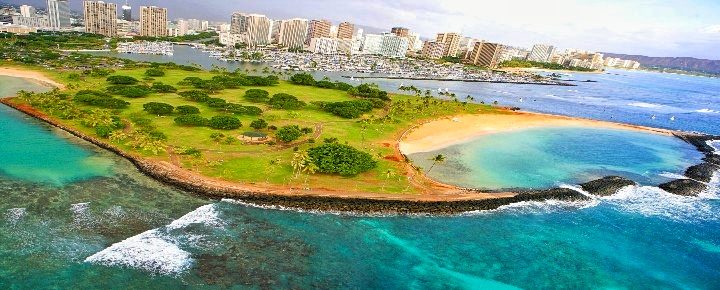
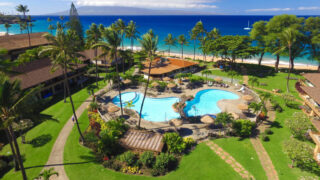
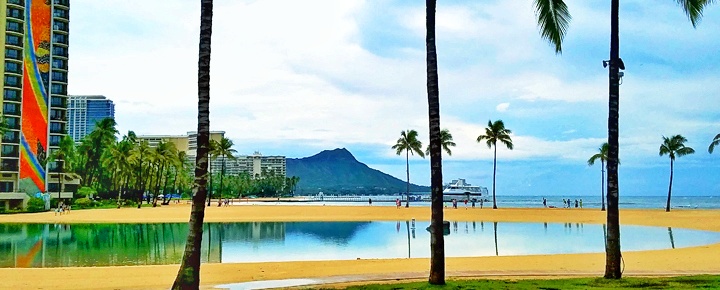

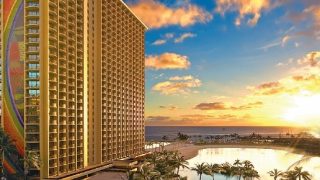
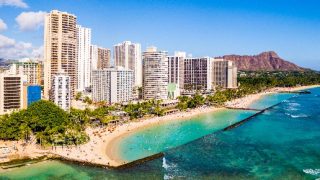
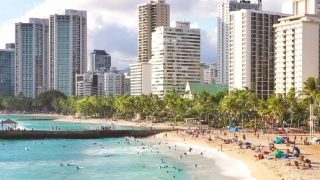
I have traveled to Hawai’i as often as possible (~50x over 40yrs) because I fell in love with the culture, which significantly includes respect and humility. I’m not a kama’āina (yet), but I have received the discount on occasion because I respect the employees, the establishment, and the culture – to include not expecting a discount that I rightfully don’t qualify for. Be kind, courteous, and respectful, and you may receive that which you shouldn’t expect.
I don’t know how I feel. I’m a senior (80) in August and never remember to ask for a senior discount anywhere – not even at McDonald’s.
Envy is not a good policy. We need to get the prices for Our vacation and not feel cheated because someone else got a better deal. Shop and ask if discounts are available.
I was surprised about 15 years ago when I was in May Company and saw a sport jacket I really liked. I simply ask what was the best price and got a lower price.
I’ll be back in August (will celebrate my 80th in Waikiki – health willing). Maybe I’ll remember to ask for a coffee at McDonald’s.
Aloha
Burger Kings in Hawaii have 84 cent “senior” coffee, & to me it tastes better than the well known mega-chain coffee. So there are some rare perks for “seniors”.
Perks for those that live there… as a former resident of Kauai… I can say I truly appreciated the ability to enjoy visiting other islands. Tourist also get special packages that’s great for them. Keep the Katarina specials as the cost of living in the islands can be burdensome…. so it helps.. helps families to visit.
I am a non-resident. I do think the kamaaina discounts are fine for the residents. I do not care what a person’s line of work may be, they are only three steps removed from the tourist industry. Keep the small discount for the resident, heck, make it a big discount.
I’m fine with resident discounts in most cases. Tourists pay sales tax, but residents pay sales tax, income tax, property tax, use tax etc. I’m not okay with “locals only” beaches or parks or clubs, etc. Where I live in utah, residents pay a discounted rate for state parks, but everyone has the same right to use it. If its not privately owned, the locals should bully anyone away.
Overpopulation is the main source of many of the problems we complain about, e.g. (im)migration and high prices, but it never gets mentioned. It’s supply and demand. More demand creates higher prices.
Kama’aina, senior, and student discounts have existed for a long time. Why are we complaining about them now? Because markets and financial malfeasance have increased the pool of consumers and a sense of entitlement. Tourists are objecting because Hawaii is very expensive, but they can choose or not choose to come here. Locals can’t readily choose not to be here, and those that do move to the mainland. Econ 101
To hit the reset button on my comments–I am All For Hawaii residents getting discounts (even big ones, if a business can afford it.) Hate knowing that locals are often priced out of many of the wonderful experiences tourists often come to HI to have.
Hawaii residence pay 11.8% in taxes. We are 2nd only to New York. I believe if businesses want to give Kamaaina discounts to Hawaii residents they should. I been paying taxes since the age of 14, I am now 50 so do the math. Kamaaina discounts are just a little give back. We also have the Jones act which makes cost of living hard for all of us born and raised here. Nevertheless this is Home especially for us Kanaka Maoli!!!
The discounts have nothing to do with the state or county governments, or taxes. These are just private businesses choosing to give (typically very small) discounts to residents for marketing purposes. That’s it.
Kama’aina rates is Microeconomics 101. It’s beneficial price discrimination in the same way as senior and student price discounts. Good for residents. Good for businesses.
Kamaaina discounts. I think they should receive discounts. As a past resident, it helped. I think the way that residents are treated is unfairly. The discounts are slim and prices are greedily over priced for all.
We look for kama’aina discounts during off peak season, for interisland travel and especially dining out. Yes, businesses should offer kama’aina discounts. Residents can support and experience the service / leisure industry, locally.
Some apply the definition “of the land” to exclude residents who were not born in Hawaii and those who do not appear local. This coincides with visitor comments about feeling less welcome and priced out. Result, loss of repeat customers and segregation.
The interaction of residents and visitors at our business enhanced everyone’s experience. We thanked visitors and residents for choosing us and asked them to return. Discounts to residents improves the economy and the visitor experience.
In-state discounts for publically controlled areas are a thing all across the country. Locals should get a benefit for all they have built and contributed.
Other than those elements the govt is supposed to control (nat parks, public beach, etc), the govt should not be mandating that vendors give in-state discounts, and should not be subsidizing them, either.
Let freedom and the market work it’s magic–no need for govt to mess things up (and the HI govt has been lining their own pockets on the backs of the HI economy for years.)
Please remind me of the government-subsidized kamaaina discounts? Lived here for 25 years. Don’t wanna miss out.
Then you would know better than I.
I suppose with all the backroom deals and corruption going in in the govt, it might be hard to be so certain of what might be subsidized, yeah?
in other words you are commenting on something that you no little about.
Personally, I try not to let knowing what I’m talking about get in the way. The only “discounts” that are provided by the state or counties (or cities in other US states) tend to be for access to state/county/city owned parks. This may include parking lots for beaches. Example: after the 2018 flood repairs, the state closed Haena beach park to non-residents, unless the non-residents get reservations and pay fees. State residents (with state IDs) get in free and no reservations required. I suppose that is a “discount”.
Way to keep the convo on point, Pal. You know Nothing about me or my experiences in Hawaii.
…so, you agree with me that discounts currently given to locals should be given, or not?
I live in hawaii was born and raised here. Yes, I do know what I am talking about. Even when I lived in vegas there were local resident discounts. Why people have to make a big deal about discounts for residents, that is what I don’t care for.
There is no government “mandated” private business discount for residents. The comments suggest that if there are, please point them out.
As a frequent visitor, my wife and I get out to golf as much as possible. Many of the courses have two rates. One local and and one tourist. We were at one local course, with another couple who were traveling with us, and two of our “local” friends. The visitor rate was 3 times the local rate. We tried to get a group rate and the guy said no. Instead of having 6 people golfing, eating, and drinking, they got none. We went to Hickam AFB. Cheaper and better views. As a former business owner, I would have made some adjustment to the price rather than have 6 customers walk out, taking several hundred dollars of income with them. I have golfed all over the US and have never seen “local” and visitor rates.
Joe B,
I have been to public (county or city owned) golf courses that had cheaper rates for residents in places other than Hawaii. Torrey Pines in San Diego was that way in the early 1980s (not sure about these days). And several of my friends who went to college nearby went out of their way to change their DL addresses to get the discounted rates. I recall another one in the greater Boston area, but I forget the name. The theory is that the residents are paying for the place via property or other taxes. But, sure, if the price difference is too great, they will put-off outsiders, and maybe lose some business.
Honesty who cares what tourists think is fair. There should be far more Kama’aina discounts to us locals. It’s just smart business.